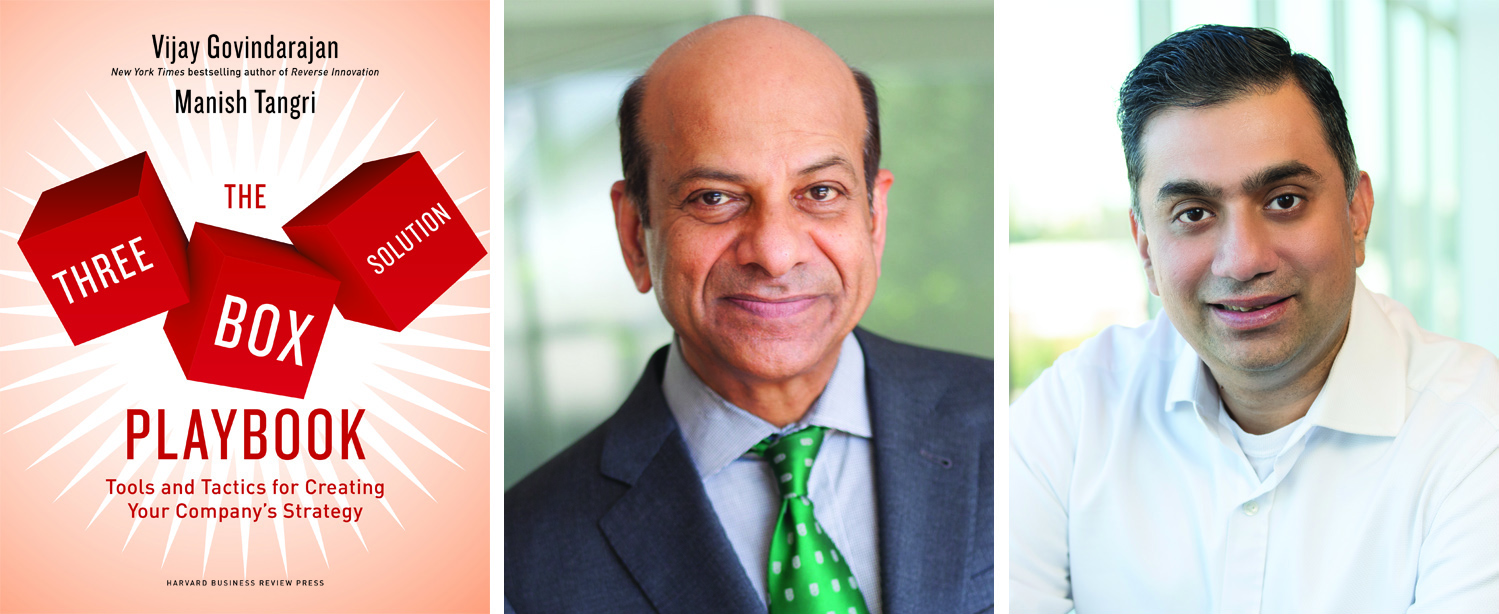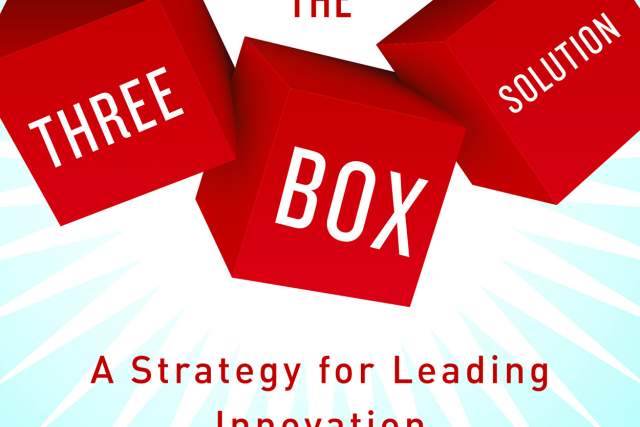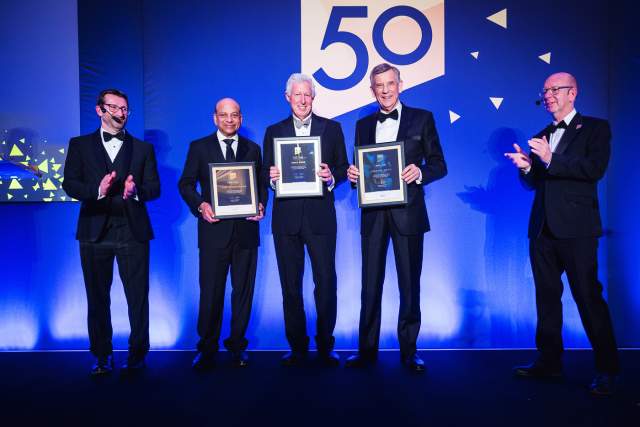Three Boxes, One Playbook
Vijay Govindarajan and Manish Tangri T’09 have teamed up to write a how-to book for leading innovation.

The core philosophy of the three-box framework is that the only constant in the business world is change, so firms need to be continuously evolving.
For the past 40 years, Vijay Govindarajan, the Coxe Distinguished Professor of Management, has worked with scores of Fortune 500 companies on the tricky juggling act that is long-term corporate success. The way VG sees it, firms must divide their attention into three time zones: managing the present, selectively forgetting the past, and creating the future. He outlined this approach in his bestselling 2016 book, The Three Box Solution: A Strategy for Leading Innovation.
The book went a long way towards making the three-box framework the lingua franca among executives charged with guiding their firms into the uncertain future. But, for VG, not far enough. “I want to put myself out of business,” he says, “and the best way I can do that is to embed my capabilities as a consultant inside companies. I want to train the trainers.”
Toward that end, his publisher, Harvard Business Review Press, suggested he put the bulk of his practical knowledge into a new book, so firms could learn the tools of the three-box system themselves. The product of that suggestion is The Three Box Solution Playbook: Tools and Tactics for Creating Your Company’s Strategy, which was published at the beginning of May. To add even more practical heft and timeliness, VG co-authored the book with his former student, Manish Tangri T’09, who works in the M&A group at Intel Capital. The pair have penned articles together for years and share a passion for innovation and the challenges of executing new ideas.
“When VG asked me to co-author this book with him, I was a little apprehensive about taking something like this on,” Tangri says. “But it became clear to me that VG was seeing my value as a practitioner with 20-plus years of experience.”
I want to put myself out of business and the best way I can do that is to embed my capabilities as a consultant inside companies. I want to train the trainers.
The central conceit of the three-box framework is that the only constant in the business world is change, so firms need to be continuously evolving. Boxes one and two, in that they deal with the present and the past are wholly different animals from box three, the dream of what’s to come. Box three is about innovating to keep a business current and thriving as the context shifts: by finding new customers, creating new value for existing customers, or dramatically changing the value chain.
That sort of evolution is easier said than done. “If you ask somebody to do box-three thinking and box-three execution, they don’t even know where to start,” VG says. “They say, ‘What am I supposed to do?’ What they need is a structure.” That’s what The Three Box Solution Playbook offers, through question prompts and exercises designed to foster a meaningful and thorough conversation among the people who will be putting the innovation into action. Moreover, the exercises are ordered to facilitate a progression from the beginning of the process to the end, so the methodology is clear and, therefore, replicable.
It’s not lost on the co-authors that their book is appearing in the midst of the most profound black-swan event of the century, the coronavirus pandemic. To sum up the situation for businesses, Tangri paraphrases the legendary Intel CEO Andy Grove: “Bad companies are destroyed by crises; good companies survive them; great companies are improved by them.” While their book is relevant in normal times (if such things exist), its focus on creating a solid future is especially relevant today, as uncertainty is at an all-time high and companies are struggling to survive today and prepare for what’s next.
“I think our book can really help leaders lead their organizations through the process of ideating, incubating and scaling new business models, to thrive in the future.” Tangri says. “Balancing resources, priorities, and execution across all three boxes is what great companies should be doing.”

